An atomic bomb test in the Arctic awakens The Beast From 20,000 Fathoms[Eugène Lourié, 1953], which swims down to New York City and, through the exquisite stop-motion animation of Ray Harryhausen, creates urban chaos. The giant dinosaur is finally destroyed while ravaging Coney Island.
The same studio, Warner Brothers, saw the box-office gold in radioactive monster pictures and began its next movie with a haunting sequence of two police officers discovering a little girl found wandering in the New Mexico desert. Terrified and in shock, she can only scream, “Them!” Them![Gordon Douglas, 1954] tells the story of gigantic ants, mutated by exposure to the radiation from atomic tests. The giant ants leave havoc and death in their wake. The army finally tracks the ants and their queen to the famous concrete LA River in Los Angeles, and destroys them with machine guns and flamethrowers. The scientist in charge surveys the charred remains of the monsters and declares, “When Man entered the atomic age, he opened the door to a new world. What we may eventually find in that new world, nobody can predict.”
That same year, Japan’s Toho Studios released their version of The Beast From 20,000 Fathoms, titled Godzilla[Ishirô Honda, 1954]. This is a dark tale of yet another huge reptilian monster rising from the sea, but this time to destroy Tokyo. Also the result of a nuclear explosion, Godzilla is truly enormous and breathes radioactive fire as he flattens cities. A heavily edited version, incorporating new footage featuring Raymond Burr as reporter “Steve Martin,” was released in the US in 1956 with the title Godzilla, King of the Monsters!(Note: yes, the character in Godzilla is named “Steve Martin.” But also remember that the soulless killer wearing that blank mask in Halloweenis named “Michael Myers!”)
Exposure to a mysterious radioactive cloud somehow causes Grant Williams to grow smaller and smaller in The Incredible Shrinking Man[Jack Arnold, 1957]. Based on the novel and screenplay by the great Richard Matheson, The Incredible Shrinking Manis both serious and ultimately profound. Jack Arnold’s exemplary direction of the intense battle in the basement between the tiny protagonist and a normal but now giant-seeming spider, clearly inspired the battle with the huge spider Shelob in Peter Jackson’s The Lord of the Rings: The Return of the King[2003] and the encounter with the massive spider Aragog in Harry Potter and the Chamber of Secrets[Chris Columbus, 2002]. And speaking of spiders… A biologist (Leo G. Carroll) experimenting with “atomic nutrients” to further food production, first suffers disfigurement and then finds that he has unleashed upon the world a gargantuan Tarantula![Jack Arnold, 1955]; a tarantula so large that only jets dropping napalm can eventually stop it. The jet pilot that saves the day is played by a young Clint Eastwood.
Another notable victim of the effects of radiation is poor Lt. Col. John Manning who, after being exposed to a plutonium bomb blast, grows into a 60-foot giant wearing what looks like a diaper in The Amazing Colossal Man[Bert I. Gordon, 1957]. Even though we think he is dead at the end of that movie, Lt. Col. Manning makes a spectacular comeback in War of the Colossal Beast[Bert I. Gordon, 1958], still 60-feet tall, still wearing a diaper. This time, however, his face is disfigured—which, I guess, is the reason his billing was changed from “Colossal Man” to “Colossal Beast.”
Radiation from a meteorite is the cause of a family curse in Die, Monster, Die![Daniel Haller, 1965], a very loose adaptation of H. P. Lovecraft’s story “The Color Out of Space,” starring Boris Karloff and Nick Adams.
Donald Pleasence’s experiments with radiation result in The Mutations[1974], directed by Jack Cardiff, one of the cinema’s greatest directors of photography. The Mutations, however, is a sleazy piece of work with scenes reminiscent of Tod Browning’s masterwork Freaks[1932], using physically handicapped people to cruel effect.
Doomwatch[Peter Sasdy, 1972] was based on a BBC television series in which the population of a small island off the English coast becomes malformed and violent after eating fish made toxic with pollution. Pollution is also responsible for The Toxic Avenger[Lloyd Kaufman, Michael Herz, 1984] and the ridiculous mutant bear in Prophecy[John Frankenheimer, 1979]. However, my favorite result of exposure to toxic waste happens spectacularly to one of the bad guys in Paul Verhoeven’s breathtaking RoboCop[1987].
Hell Comes to Frogtown[Donald G. Jackson, R. J. Kizer, 1988] concerns a group of mutant amphibians in a post-apocalyptic future that capture a group of non-mutant, fertile women to use as sex slaves!
No explanation is given for the hideous monsters in The Mist[Frank Darabont, 2007]. Based on a novella by Stephen King, people find themselves trapped in a supermarket surrounded by dense mist and lots of genuinely creepy monsters. I suggest that the monsters are not aliens, or some form of biblical retribution, but the result of a military atomic weaponry program gone wrong—that way I can put a cool photo of one of the gross creepy crawlies seen through a blood spattered windshield into this section!
All this mutating should warn us about the dangers of atomic energy, atomic weapons, basically all things atomic. Of course, in the real world, events like the Chernobyl disaster, or a tsunami hitting Fukushima, rarely happen. But listing the growing number of countries with nuclear weapons is hardly reassuring: The UK, Russia, the US, China, France, probably Israel, and perhaps India and Pakistan; both Iran and North Korea are working hard and will have them soon.
In the words of Mad Magazine’s immortal Alfred E. Newman, “What, me worry?”
Atomic Mutations[ Book Contents]
Matinee [Joe Dante, 1993]
A scene from Mant!, the movie within the movie. A pitch-perfect parody of the many Big Bug films of the 1950s.
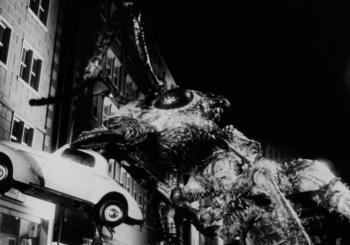
Atomic Mutations[ Book Contents]
Godzilla, King of the Monsters! [Ishirô Honda, 1956]
The US poster for the 1956 American release of this Japanese response to being the only country so far that has been atomic-bombed. The tagline says it all: “Civilization crumbles as its death rays blast a city of 6 million from the face of the Earth!”
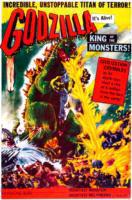
Atomic Mutations[ Book Contents]
The Incredible Shrinking Man [Jack Arnold, 1957]
The poster’s tagline is accurate: “A fascinating adventure into the unknown!”
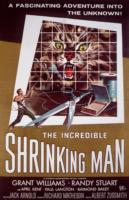
Atomic Mutations[ Book Contents]
Tarantula! [Jack Arnold, 1955]
Scientist Leo G. Carroll’s experiments not only cause him to be terribly deformed, but result in a colossal tarantula being unleashed upon the world. The military end up dropping napalm on the huge spider!
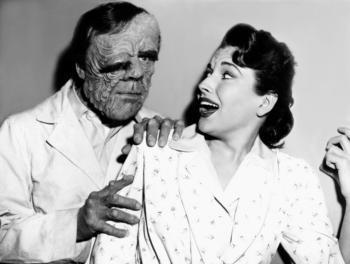
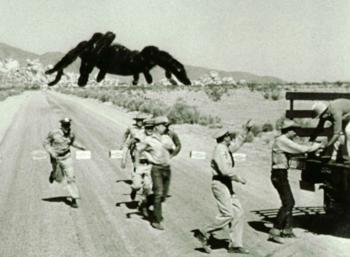
Atomic Mutations[ Book Contents]
The Amazing Colossal Man [Bert I. Gordon, 1957]
Lt. Col. Glenn Manning (Glenn Langan) is exposed to plutonium radiation after a bomb test and grows 60-feet tall. And worse, he goes crazy.